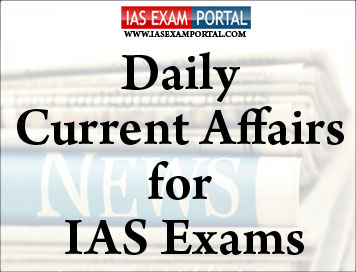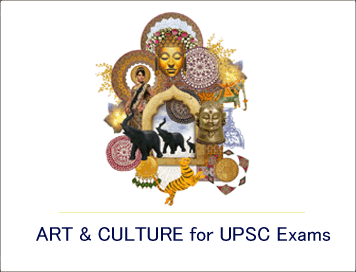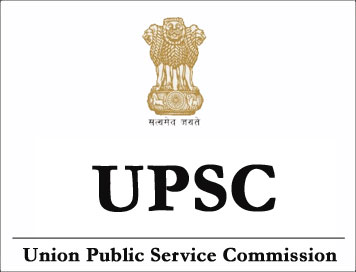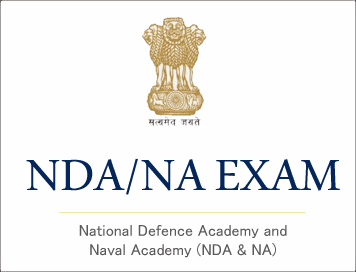MUSIC OF INDIA
Music of India includes variety of folk,pop music, classical music etc. The two main traditions of classical music in India are Carnatic music and Hindustani Music. Carnatic Music are found predominantaly in the peninsular regions and Hindustani music are found in the northern and central regions. Hindustani music was not only influenced by ancient Hindu musical traditions but also enriched by the Persian performance practices of the Mughals.
Hindustani Music
It was Vishnu Digambar Paluskar and Vishnu Narayan Bhatkhande who spread Hindustani classical music to masses by starting schools, teaching music in classroom and devising a standardized grading and testing system. Bhatkhande standardized and unversaliszed the notation system making it easier to spread music.
Dhrupad is an old style of Hindustani singing, traditionally performed by male singers. The great Indian musician Tansen sang in the Dhrupad style. Dhrupad was the main form of northern Indian classical music but has now given way to Khyal.
Khyal is a form of vocal music in Hindustani music. It was adopted from medieval Persian music It is special as it is based on improvising and expressing emotion.
Another vocal form Tarana are medium to fast pa ced songs that ar e usual ly per formed towards the end of the concert. They consist of a few lines of poetry with rhythmic syllables.
Tappa is a from of Indian semi- classical vocal music. It originated from the folk songs of the camel riders of Punjab and was developed as a form of classical music by Mian Ghulam Nabi Shori.
Thumri is a semi classical vocal form said to have begun in Uttar Pradesh. The lyrics are typically in Brij Bhasha and are usually romantic.
Ghazal is an originally Persian form of Poetry. In India, Ghazal became the most common form of poetry in the Urdu language.
Although Hindustani music clearly is focused on t he vocal per forma nce, recently instrumental Hindustani music is very popular than vocal music especially outside South Asia.
Carnatic Music
Carnatic music is a system of music commonly associated with the southern part of India especially. Andhra Pradesh, Karnataka, Kerala and Tamil Nadu. Carnatic music is completely melodic with improvised variations. Purandara Dasa is credited with having founded today’s Carnatic music.He is credited with having elevated Carnatic music from religious and devotional music into the realm of a performing art. Carnatic music is usually performed by a small ens embl e of mus i cia ns consi s t ing of a principa l per former (vocalist ) a viol in, mridanga ,and a tamburu. Today carnatic music is presented by musicians in concerts or recordings either vocally or through instruments.
Important elements of carnatic music
sruti commonly refers to musical pitch
Swara refers to type of mu- sical sound that is a single note, which defines a relative position of a note, rather than a defined frequency.
Raga - A raga in carnatic mu- sic prescribes a set of rules for building a melody.
Tala - Tala refers to the beat set for a particular composi- tion ( a measure of time)
PERSONALITIES OF CARNATIC MUSIC
M.S. Subbulakshmi : was a re- nowned Carnatic vocalist. She was the first musician ever to be awarded the Bharat Ratna. She also received Ramon Magsaysay Award. Some of the famous works include Suprabhatam, Bhajagovindam, Vishnu Sahasranamam, Ha- numan Chalisa etc.
Dr. M. Balamurali Krishna : is a carnatic vocalist, multi - instrumentalist and a play- back singer. He has composed over 400 com- positions in various languages like Telugu, San- skrit and Tamil. Dr. Balamuralikrishna has in- novated the whole Carnatic Music system by keeping its rich tradition untouched. He also innovated the tala system. He has won many awards including Padma Shri, Padma Bhush-an and Padma Vibhushan and many honorary doctorates from various universities.
Types of Hindustani Music and its meaning
Dhrupad - Effort from vocal chords and lungs
Dhamar - Play of Krishna during holy
Khayal - Delicate, romantic and based on imagination.
Thumri - Romantic religious literature
Tappa - Quick turn of phase
Bhajan - Religious devotional songs
Tarana - Syllables stung together to set a rhythm
Sabadas - Sikh religious songs
Qawali - Indo- Muslim repertories of songs in groups.
Ghazal - Independent couplets on love and devotion.
Types of Carnatic Music and its meaning Ragam
Tanam- Pallavi - Elab orate r hythmic a nd melodic variat ion in unmeasured sense.
Kriti-Kirthanai - Mos t popular type which r efers to devotional music laced with poetic beauty.
Varnam - Performed at the beginning of a concert ; a completely composed piece.
Padam - Slower tempoed love songs referring to the human yearning for the adored god head.
Javalis - Faster tempoed love songs with direct description of human love.
Tillana - Meaningful phrases are interspersed with variety of meaningless syllables
Semmangudi Srinivasa Iyer is one of the greatest carnatic vocalist of the twentieth century. He is the Pitamaha of carnatic music. Although a tradionalist, he introduced many novelties in the works of composers ranging from Swati Tirunal to Ambujam Krishna. He also popular is edrare ragas such as Bhava priya Salagha bhairavi and Narayanagowla. Semmangudi has received many awards including Padma Bhushan and Padma Vibhushan.
M.L.Vasantha kumari was a carnatic musician and playback singer for film songs. M.L. Vasanthakumari popularised unfamiliar ragas. She popularised the compositions of Purandara Dasa. She had received many awards including the Padma Bhushan.
MD Ramanathan was a carnatic music composer and vocalist. He was known for his unique style of singing. He sang with adequate bhava or expression. His style of rendering was very different from the standard format of carnatic concert. He often deviated from the s tandard set and sa ng his own versions.
G.N. Balasubramaniam was a legendary vocalist in the Carnatic tradition. He was the first concert musician to approach the concept of raga alapana in a step-by-step approach. He was also the first major Carnatic musician to moot the idea of Indian music as a single entity rather than separating it into Hindustani and Carnatic Systems. He composed over 100 krithis and invented new ragas.
Ariya kudi Rama nujaIy engar was a carnatic music vocalist known for his unique style. His unique style of singing came to be known as the riyakudi Tradition.
PERSONALITIES OF HINDUSTANI MUSIC
Bhimsen Joshi was on Indian vocalist in the Hindustani classical tradition. He was the member of the Kirana Gharana. He is famous for Khyal form of singing. He enriched the kirana gharana by adding his own distinctive style and adopting characteristics from other gharanas.He was the recipient of s evera l prestigi ous awards including Padma Shri , Padma Bhushan and Padma Vibhushan. Bhimsen Joshi is renowned for his unique style and mastery over ragas.
Mallikarj un Mansur was an Indian Hindustani classical singer of the Khyal style in the Jaipur- Atrauligharana. He had received many awards including Padmabhushan, Kalidas Summan etc.
Pandit Jasraj is the exponent of the Mewati Gharana of Hindustani classical music. Pandit Jasraj’s greatest contribution to Indian music is his conception of an unique and novel jugalbandhi based on the ancient system of moorchanas, between a male and a female vocalist, each singing in their respective scales and different ragas at the same time. Pandit Jasraj is the recipient of several honors and awards.
Begum Parveen Sultana is a Assamese Hindustani classical singer of the Patiala Gharana. She is among the foremost classical vocalist in India. She is known as Queen of Classical Vocal. She was confer red the Padmashri in 1976.
Kumar Gandharva was a Hindustani classical singer, famous for his unique vocal style. He did not follow any kind of Gharana. He experimented out his own styles. He was awarded the Padma Vibhushan in 1990.
Siddheswari Devi was a Hindustani singer from Varanasi. She sang Khyal, Thumri and short classical forms as dadra, chaiti, Kajri etc. Siddheswar’s music had all the salient features of the Banaras style such as simple charm, intensity of feeling and effective expression of emotions.
Girija Devi is an Hindustani classical singer of the Banaras gharana. She sings different general of Hindustani vocal music like Khyal, Thumri, Dadra, Chaiti and Kajri. But her forte lies in singing the poorab and Thumri. So she is called the Queen of Thumri.
Gangubai Hangal was an Indian Hindustani musical singer of the Khyal genre. She belonged to the Kirana Gharana. She was famous for her deep and powerful voice.
MUSICAL INSTRUMENTS AND ITS EXPONENTS INDIAN MUSIC
Mridangam: Palakkad Mani Iyer, T.R. Murthy, Guruvayoor Doraiswami, Karaikudi R.Mani, Umayalpuram Shivaraman, Velloor A. Ramabhadran, Mavelikara Krishnan Kutty Nair.
Sitar : Ravi Shankar, Mushtaq Ali Khan, Vilayat Khan, Uma Shankar Mishra, Nikhil Banerjee,Raiz Khan, Harashankar Bhattacharya , Budhaditya Mukherjee, Abdul Halim Jaffer Khan.
Sarod : AmjadAli Khan, Ali Akbar Khan, Rajiv, Taranath
Violin : V.G. Jog, Lalgudi Jayaraman, T.N. Krishnan, Yehudi Mennuhin, M.S.Gopala krishnan,Kunnukkudi Vaidyana than, Kalyana Krishna Bhaga vatar , L.Subr amaniam, Chandayya, Kantha Devi, Gajannan Rao Joshi (Hindustani), Zubin Mehta (Western).
Santoor : Shiv Kumar Sharma , Tarun Bhattacharya, Bhajan Sopperi.
Flute : N.Ramani, Hariprasad Chaurasia, T.R. Mahalingam, Pannalal Ghosh, T. S. Shankaran, Sikkil Sisters
Mandolin : U. Srinivas, S.Balamurali Krishna.
piano : Surojeet Chatterji, Kaikhoshha purji , Sorabjee.
Shehnai : Bismillah Khan , Bagheshwari Gamar, Bade Gulam Ali.
Tabla : Al la Rakha , Zakir Hussian, Shankar Ghosh, Aba d Mistry, Rimba Shiva , Santha Prasad, Sheikh Dawood, Sharafat Ahmed Khan, Kishan Maharaj , Ahmed, Tirkuva, Pt. Samta Prasad.
Veena : Chitti Babu, Mysore Doraiswami Iyankar, Azad Ali Khan (Hindustani), Badik Ali Khan, Kumara Swami Iyer (Carnatic), Kalpakkom Swaminathan, Ka lya na K ris hna Bhaga vata r, S. Balachander.
Sarangi : Pandit Ram Narayan, Sultan Khan, Sabri Khan.
Clarnet : Sheikh Mohammed Arif.
INDIAN VOCALISTS
Carnatic : M .S. Subbu lakshmi , Balamurali Krishna ,Chembai Vaidya natha Bhagavathar, Semmangudi SinivasaIyer, M.L.Vasantha Kumari, M.D. Ramanathan, G.N. Balasubramaniam, Ariyakudi Ramaniya Iyyengar.
Hindustani : Bhimsen Joshy, Mallikarjun Mansur, Pandit Jasraj, Parveen Sul- tana, Naina Devi, Siddheswari, Girija Devi, Kumar Gandharva.







